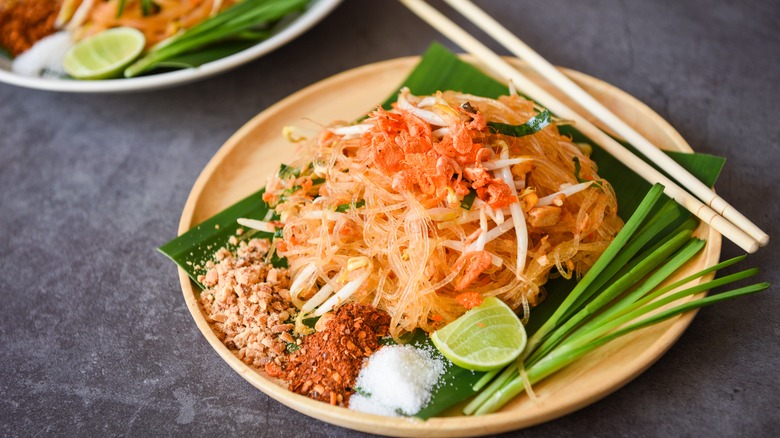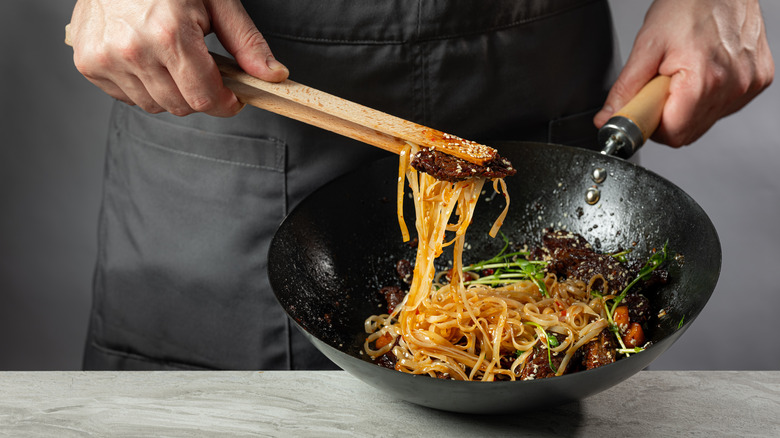The Chinese Origins Of Thai Stir Fry
If you happen to adore Thai food, you've got are not alone. More than 5,300 Thai restaurants thrive in the United States alone, according to Munchies, serving up menu classics such as Pad Thai, chicken satay, tom yum goong, and various Thai stir-fries, curries, and peanut sauces. But the foodie culture of Thailand has deeper roots than you might imagine. The "national dishes" of this Southeast Asia seem more planned than organic, borrowing key components from other Asian countries – especially when it comes to Thai stir fry dishes.
The highly rated and frequently featured pad Thai dish is considered a stir fry, but unlike its rice-based counterparts, pad Thai features rice noodles, explains Hot Thai Kitchen. Along with various veggies, proteins, nuts, and the crucial tamarind paste and fish sauce, the medley reigns supreme among Thai stir fry menu options. However, when it comes to this and other stir fry dishes prevalent in Thai cooking, you might want to toss some credit about 2,000 miles away –- to mainland China, according to The Atlantic.
A grand food plan
As the story goes, Thailand in the 1930s and 40s sorely needed some upgrades, not only on the world stage but within the country. That's exactly what happened when Thai prime minister Plaek Pibulsonggram, generally known as Phibun, set his mind on modernizing Thailand and incorporating Western cultural components, explains The Atlantic. Along with a national name change from Siam to Thailand, the country got a cultural overhaul with an emphasis on national identity – including its cuisine. The world of Thai gastronomy changed forever, including the designation of a national dish based on stir fry methods and recipes. But the dish, pad Thai, happened to hail from China, not Thailand.
Though undeniably a Thai cooking method now, stir-frying is an inherently Chinese culinary style, according to Gastronomica, and most industry professionals nod to Chinese chefs as inventors of the noodle. Even the full name of pad Thai, kway teow pad Thai, gives away its Chinese origins. The phrase "kway teow" refers to rice noodles in the Chinese language, and immigrants from south China possibly brought some version of the dish with them to Thailand.
Regardless of origin, the pad Thai dish promoted by Phibun was a resounding success, strengthening the national economy, providing a nutritious dish prepared in sanitary ways, and uniting farmers for a sorely needed income base. It also became a way of globally elevating Thai culture in Western populations. That's a lot of pressure on a dish of stir-fried food but nobody's complaining.

